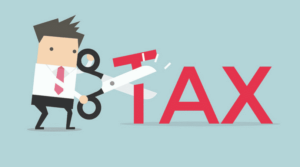Smart Ways To Secure Your Bike And Protect It From Getting Stolen
Bikes are one of those items that are regularly stolen, and regrettably, you, as the owner, can sometimes be held liable if you do not make adequate efforts to lock and safeguard your bike from theft. Leaving it unsecured, believing that no one will dare to take it during the day or in a crowd, is a bad idea because you should be aware of how easy it has become for thieves to steal numerous goods, much more expensive than a bike, nowadays. To that end, check out some easy yet efficient techniques to secure your bike and avoid dealing with this headache.
Good Lock
The best way to protect your bike from being stolen is to invest in a high-quality lock. The finest bike locks come in a variety of forms, sizes, and price ranges, and as a general rule, you get what you pay for: more robust materials and designs cost more than less expensive choices. If you’re locking it outside a railway station overnight, the lock’s criteria will most likely be different (and higher) than if you’re securing it to a table while drinking your coffee nearby.
U-locks are widely regarded as the most secure since they are composed of solid steel and can outperform portable angle grinders. However, because of their set size and form, these are the heaviest locks and may restrict what you may tie your bike to.
Cable locks provide the freedom to weave through intricate frames and around bigger anchor points, but be cautious when purchasing because thinner cables can be cut easily with bolt cutters. This is why it is not always a good idea to lock your bike with a cable, bearing in mind that these locks are also intrinsically vulnerable due to their tiny strands. Chains are another viable alternative. However, you need to know that a store chain and lock will not withstand a thief’s advanced equipment for cutting your lock.
How to Use Your Lock?
Even the most secure U-Lock is useless if it is not utilized appropriately. Because no two bike racks are the same, secure your bike according to its worth. The lock should be passed through the frame first, then the back wheel, and finally the front wheel. Use a second lock to connect the wheels to the frame and the primary lock for better security if your bike will be parked in an area notorious for bike theft.
Also, consider the object to which your bike will be attached, or better said, how difficult it would be for a thief to remove your bike while the lock is still attached.
Where to Park It?
When it comes to your bike’s safety, the location where you park is critical. The higher the foot traffic and the better the lighting, the more difficult it is for a burglar to operate unobserved by pedestrians and take your bike. However, burglars have been known to hack locks with portable angle grinders in broad daylight, so this seems quite discouraging. A proper cycle parking garage is better since the majority of them have been surveyed. Avoid leaving your bike on the street, where it is particularly vulnerable to theft.
Geo-Tracking Device
Geo-tracking gadgets may be useful if you wish to increase the security of your bike even more. Geo-tracking systems and their accompanying applications are intended to aid in the reduction of bike theft by informing the owner whenever the bike moves. The tracker, which is compact and light, is mounted on the bike. The software allows the owner to track the bike and even inform the authorities as to where it is being stored.
Bike Alarm
Consider a bike alarm as additional criminal prevention. There are many possibilities available on the internet, and your local bike shop may also be a helpful resource.
A 100 dB loud beep—roughly similar to a vehicle alarm—sounds whenever a would-be burglar tries to steal your bike. Most would-be robbers would be put off by this. When you add the alarm, it becomes one of the top solutions for securing your vehicle.
Register It
Another thing you may do is enter the serial number of the bike you buy into the Bike Index database. If it is stolen, you may notify the local cycling community. If someone comes upon the bike and notifies you, you’ll have the documentation you need to have it back.
We hope this guide will assist you in understanding the steps you need to follow to guarantee your bike is safe and the chance of theft is considerably reduced. Have a safe and enjoyable ride!






